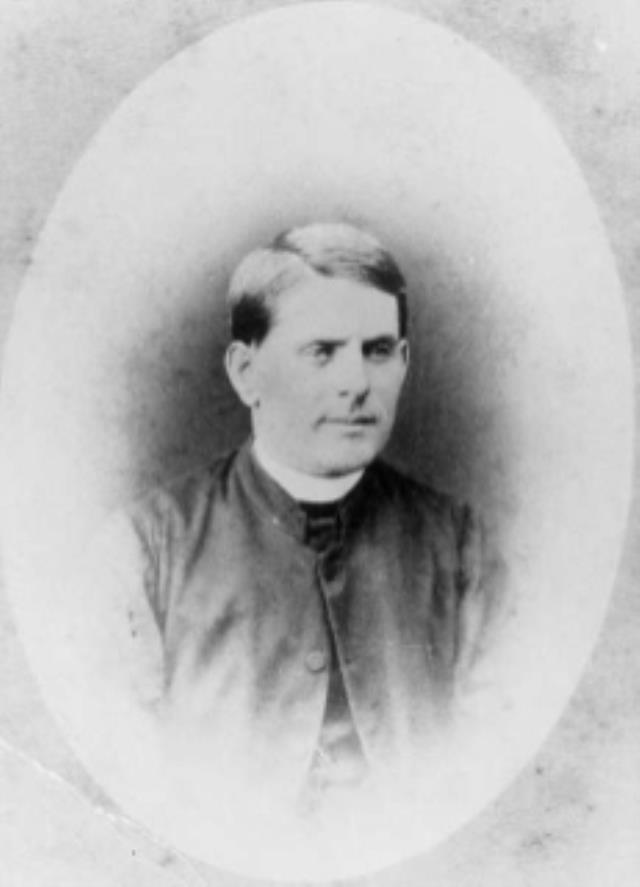The discovery of tin in Stanthorpe saw a population boom in the 1870s, which in turn saw tremendous growth to the organised church of the colony. 1874 saw quite a few developments in this area.
Both the Methodist and Roman Catholic populations saw growth in 1874.
After Rev. Richard Orton transferred, the Rev. W.G. Taylor came from Albert Street, Brisbane, to Warwick.
He is credited with leading a spiritual revival in the colony and in turn a need for the church to be extended in order to fit everyone who wished to attend services.
Quarterly services were held in the Prince of Wales Theatre, at the northwest corner of the intersection of Lock and High Streets at 11 am, 3 pm and 7:30 pm. Sacraments of Baptism and Holy Communion were conducted on the occasion of each visit by Rev. Taylor.
Other Sabbath services were reportedly conducted at request, with local preachers including William Alfred Noble and Hugh Long.
William Alfred Noble was a notable figure in the Methodist population, with his association to Methodism dating back to this arrival in the colony in 1847.
Other Leaders were John Tucker, Society Steward, Edward Gadsby, Poor Steward and John Davidson, Church Steward.
The growth of the Methodist church in the colony saw William Alfred Noble start a building fund in 1873.
He recorded “I made a collection at each service and banked the money to the credit of the church fund. My daughter, Mrs. Davidson, and Mrs. G.P. Merry went out to the tin mining companies and collected a goodly sum of money. This, with the nest egg already in the bank, warranted us in building the first Wesleyan church in Stanthorpe”.
Appointed on 30th September 1873, the building committee consisted of Messrs. F.T. Smith, T.C. Blunt, J. Tucker, W. Jeffcote, J. Davidson, E. Gadsby and W.A. Noble.
Arrangements for the building of a church proceeded quietly, the building, 30 x 25 feet, planned to be weatherboarded and lined and with a shingle roof.
It was finished by the end of 1873 and officially opened on 18th January 1874 by the Rev. W.G. Taylor in the presence of a large congregation and the Revs. A. Midgley (Toowoomba) and M. Hausman (Presbyterian). The building cost 180 pounds and it was opened free of debt.
In the early 1870s, Roman Catholics also saw growth in the colony and as result desired their own pastor and priest.
In 1872 Bishop Quinn recruited a number of priests in Italy. He made plans to bring a large number of Italian peasants to the colony, and while these plans did not go ahead the priests proved valuable.
To Stanthorpe, Bishop Quinn assigned twenty-five-year-old Father Jerome Davadi.
It was apparently intended that Father Davadi would serve from Warwick under the direction of Father McDonough, but no records can be found of his ever serving there.
Father Davadi is recorded as having performed his first marriage and baptisms in August 1874, though he took his first services at Easter 1874.
Plans were soon in hand for extensions to the church, and no doubt the good Father, anxious for the conversion of one of his own race, was pleased to have the town’s cabinet maker and undertaken, Peter Modini, to carry out the work.
A twelve feet extension allowed for a vestry room with the altar shifted into part of the extension. A neat porch and a high gallery completed the work, but plans were put in hand at once to provide for the anticipated arrival of the Sisters of Mercy.
Towards the end of his long term in Stanthorpe Fr. Davadi became gravely ill and received the assistance of Fathers McKiernan, Healy and Casey.
On 22 January 1900, at the age of 53 years, Jerome Davadi passed to his rest, mourned by the people of Stanthorpe. An impressive headstone now marks his grave in the Stanthorpe Cemetery, a tribute from the people he served so long.














